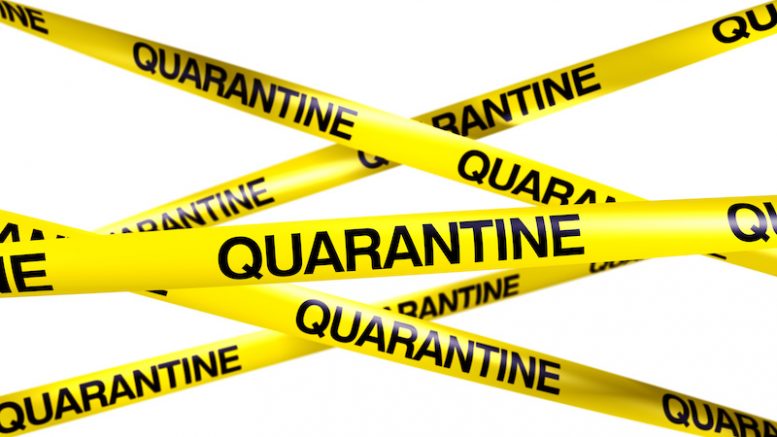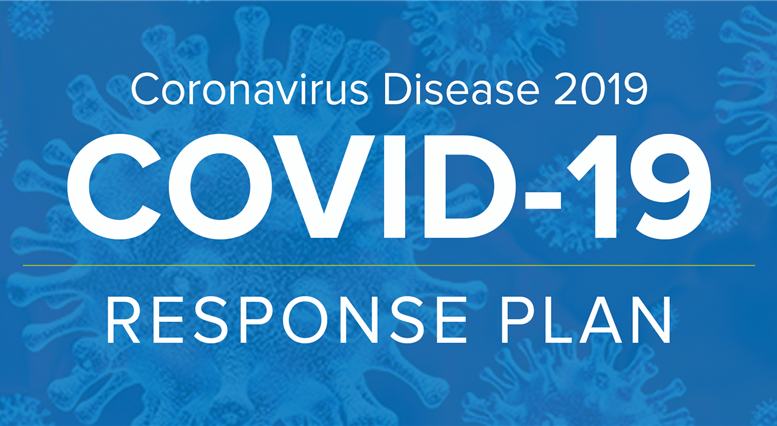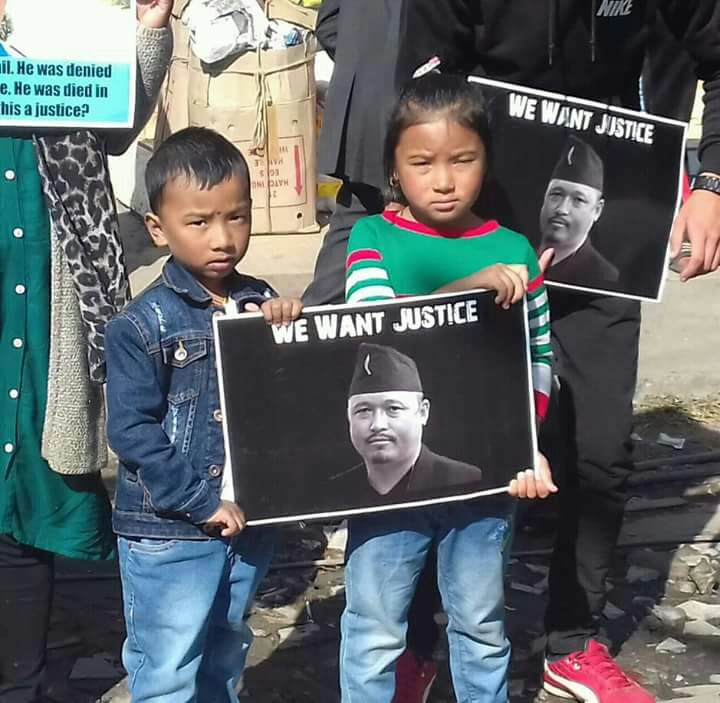The COVID19 pandemic has been claiming lives and livelihood around the Globe at an alarming rate. Global & National Action Plans and initiatives to combat the pandemic have already been underway. Its success ultimately depends upon the effective and prudent actions undertaken at the Regional and Local level to implement it.
It is also pertinent to understand that the challenges and aspirations at the Regional and Local level differ from each other. Action Plan at the Local and Regional Level, therefore, needs to be tailored and focussed to cater to the specific challenges and aspirations of the particular Region and Locality. It is also appreciated that though suo moto sporadic and isolated actions are being carried out by various groups and organisation at the local level however there is a need for a well thought, coordinated and synchronized action to curtail discord and maximize benefits. The intent, therefore, is to maintain a process that leads to mitigation actions by keeping in mind the size, resources, capability, and vulnerability of the local community. A generic Local Apex Plan addressing both the Local challenges and Global and National objectives through the involvement of all spheres of Stakeholders including the Local Administration is crucial. To summarise this would be to devise a Plan for “Thinking Globally, Acting Locally”.
In light of the above concerns, an attempt has been made by the Concerned Citizens to formulate an Apex Plan for Combating COVID19 in the Hills, Dooars and Terai region by assembling and brainstorming the various contributory crowdsourced ideas, in a common platform, offered by individuals from various walks of life. This is by no means an official guidance document endorsed by any governmental agencies. It is adjunct to the updated guidelines and resources issued by the State and Central Government bodies. This Plan identifies actions to reduce the impact of Covid19 in the Hill, Terai and Dooars community in a harmonious and integrated manner.
The Plan indicates different actions that can be undertaken under 9 broad areas ranging from Surveillance & Quick Response, Case Management, Supply Chain Management of Medical and Essential items, Media and Communication, Samaritans and Philanthropists, Protocol for Vulnerable Groups, Elected Representatives, Strengthening Public Distribution and Monitoring and Evaluation.
Successful implementation of this Plan ultimately depends upon the wholehearted participation of local citizens, local BAR, local administration, local chamber of commerce, local religious heads, local NGOs, Rotary & Red Cross, local medical fraternity, local media and representatives from civil society local volunteers and academia.
The concerned citizens of Hill, Terai and Dooars areas, having made a small attempt to formulate and place the Plan to Public, now humbly appeals all the stakeholders in the Hill, Terai and Dooars Community to come forward and act in unity at this time of crisis to serve the Society by associating themselves in whatever way possible to implement this Plan. A special request is made to the Media Fraternity and Local Administration to reach this Plan to all citizens of the Hills, Terai and Dooars at their doorsteps.

Below is the action plan:-
In the present global COVID19 pandemic the containment challenges and the consequences of transmission may be region-specific. Even though sporadic mitigation actions are being carried out by various groups and organisation at a local level, the need of the hour is synchronized action to curtail discord and maximize benefits. A generic local Apex Plan that addresses regional challenges and also encompasses the objectives of the State and Nation will be valuable in this regard.
This platform would be necessary for bringing Local Civil Society, Local Citizens, Local Representatives, Local Administration, Local Media, Local Chamber of Commerce, Local NGOs, Local Medical Fraternity and Local & outside Experts together for framing and execution of the plan. Besides the basic idea of disease mitigation, the plan should remain dynamic, thus accommodating emergent changes.
In view of the above, a skeletal plan based on the urgent present priorities is proposed. The plan may be executed by forming implementation and monitoring Sub Groups with representatives from local citizens, local legal advocates, local administration, local chamber of commerce, local religious heads, local NGOs, Rotary& Red Cross, local medical fraternity, local media and representatives from civil society, philanthropist, local volunteers and academia.
1. Surveillance, Quick-response Team.
Surveillance and Quick-response team will focus on rapid detection of travellers from COVID19 hotspot cities of Indian and travellers with a recent history of foreign travel, comprehensive and rapid contact tracing, and case identification. They will also take efficient steps for mandatory quarantine (14 days) of new entry. Some actions visualised for them could be as per the table below.
| Sl No | Action to be taken |
| 1 | Form, train and equip quick-response teams to investigate cases and clusters and conduct contact tracing within 24 hours (as per WHO guidelines). The Quick-response teams to report to a designated Medical Officer(s). |
| 2 | Mapping the affected area. Demarcation of the area of approximate 3-4 km radius around the residence of the positive cases. This area to be defined as containment zone with its periphery as a buffer zone. |
| 3 | Quick response teams to engage volunteers of a broad spectrum (Red Cross, Rotary, NSS, NCC, Aganwadi, etc) in the locality after proper briefing on roles and responsibilities and infection,prevention and control practices. Volunteers safety gears also to be assured. |
| 4 | Coverage area and number of households (approximately 50-60) for Quick response team to be assigned. |
| 5 | Thorough travel and social screening of the background of persons entering hills besides strengthening medical scrutiny. |
| 6. | Neighbourhood response team of young volunteers to be constituted to help their designated neighbourhood in terms of food supply from the market, emergency prescription medicine for the elderly and infirm, helping with water supply with areas with inadequate water supply, etc This is as minimize outdoor activities in the neighbourhood. They can also act as a neighbourhood watch to urge people to remain indoors. |
| 8 | Surveillance team to help and reach out to the elderly who are most susceptible to COVID19 on priority basis. |
| 7. | Focus on mandatory quarantine for entrants from COVID19 hotspot areas (national/international). |
2. Case Management Team
Once the infected are identified there is a need for effective case Management by offering proper help to the patient and their family based on severity. Discrimination and stigmatisation are to be sensitized and tackled. To combat further spread of infection there is a need for identification of local quarantine centre, immediate involvement of doctors and all possible help is needed. Special considerations for susceptible populations (the elderly, patients with chronic diseases, etc) are to be prioritised. Actions required in this regard are given in the table below.
| Sl No | Action to be taken |
| 1 | Categorizing of public and private health facilities and other alternative facilities that may be used to provide treatment. [Spaces in Private schools which is unused at the moment may be explored] |
| 2 | Identifying the public and private institutions best suited for isolation/quarantine. Hospitals facilities to be strengthened for Ventilator management/ critical care management. [Requisition for more critical care equipment and trained manpower to be expedited after the enquiry of inventory and functionality of existing ones] |
| 3 | COVID19 testing centres (PCR test) to be expanded to the local region immediately. To follow national guidelines and protocol for testing. In the prevailing setting sample collection and transfer to be made more effectual and prompt. |
| 4 | Roadmap has to be drawn out clearly to mitigate the risk of death and spread of the virus, covering both urban and well as rural areas. |
| 5 | Assigning special ambulance for the transfer of patients. The drivers to be appropriately trained in infection prevention and control practices and also in disinfection of ambulance after transporting suspect cases. Drivers of these ambulances will be provided with appropriate PPE. |
| 6 | Personal Protection Equipment (N-95 Mask, Gloves, Goggles,coveralls, headgear, footwear) to be stockpiled from accessible vendors(to be comprehensive explored). |
| 7 | WHO guidelines to be adhered to for the self-care of patients at home with mild COVID19 symptoms with timely medical supervision. [This has to be done with exhaustive general awareness campaigns by influencers and local media] |
| 8 | People should be urged to self-report of symptoms to the medical facility and Surveillance teams. |
| 9 | Areas for Quarantine, isolation, Intensive care, to be reserved within hospitals |
| 10 | Health services like immunisation of children, institutional deliveries, etc. must continue along with interventions to arrest the spread of COVID19 |
| 11. | Creating 24/7 Helpline [The manning to be government assigned or trained volunteers with protocols/FAQs to be deliberated] |
3. Public health communication of COVID19 Team
It is critical to communicate to the public about COVID19, and update them about new actions to be taken by them to prevent transmission on a regular basis and also address community concerns, rumours and misinformation. It is also important for the public to know about the actions being undertaken or contemplated by Local Administration. It is also equally important for the Local Administration heads to know and access the need of the public and the effectiveness of its actions being implemented and the room left for further improvement. Compassionate, transparent and reliable messaging in local languages through trusted channels of communication, using community-based networks and key influencers is thereby needed. Media can also act as a link between the public and the Government. Actions needed in this region could be as per the table given below:
| Sl No | Action to be taken |
| 1 | Key target audience, perceptions, concerns, influencers and preferred communication channels |
| 2 | Recognizereliable community groups (local influencers such as community leaders, religious leaders, health workers, community volunteers, Local Cable Channels and local networks. |
| 3 | Dissemination of messages and materials in local language through appropriate communication channels partnership with local channels. |
| 4 | Successful public health communication tools and expertise used by other states to be surveyed and used with adequate translations to the local language. |
| 5 | Communications to emphasize on ‘physical distancing’ as a means of interrupting transmission. Blanket recommendation for the public to stay at home and avoid mass gatherings and close contacts. Internet-based and mobile phone communications to be encouraged. |
| 6 | Messages to encourage community to follow frequent hand hygiene, hygienic respiratory habits (sneezing, coughing), self-monitoring of health (temperature and symptoms) and reporting to the quick-response teams about persons in their locality having symptoms i.e. cough, fever, breathing difficulty. |
| 7 | A daily briefing by Elected Representatives, Administration and Social Groups, Medical Authorities. Points to be prepared by the district administration for uniformity of information. |
| 8 | Making people aware of 24/7 helpline [The manning to be government assigned or trained volunteers with protocols/FAQs to be deliberated] |
4. Supply Management of Medical and Essential items Team
Flattening the COVID19 curve locally requires effective management and uninterrupted supply of medicinal and other essential products. At times of crisis supply management itself face the crisis. The economic effects of the crisis—and the livelihoods at stake—come into sharp focus. Businesses groups must respond on multiple fronts at once and at the same time safeguards their operational viability which is expected to come under strain from. The Local Chamber of Commerce, The Local Administration, The Local Transport community and Local Media and Volunteers are required for joint action. Desired Actions needed in this region could be as per the table given below:
| Sl No | Action to be taken |
| 1 | Create transparency on multitier supply chains, establishing a list of critical components, determining the origin of supply, and identifying alternative sources. |
| 2 | Estimate available inventory along the value chain—including spare parts and after-sales stock—for use as a bridge to keep production running and enable delivery to customers. |
| 3 | Assess realistic final-customer demand and respond to (or, where possible, contain) shortage-buying behaviour of customers. |
| 4 | Optimize production and distribution capacity to ensure employee safety, such as by supplying personal protective equipment (PPE) and engaging with communication teams to share infection-risk levels and work-from-home options. These steps will enable leaders to understand current and projected capacity levels in both workforce and materials. |
| 5 | Identify and secure logistics capacity, estimating capacity and accelerating, where possible, and being flexible on transportation mode, when required. |
| 6 | Manage cash and net working capital by running stress tests to understand where supply-chain issues will start to cause a financial impact. |
| 7 | People to be encouraged to grow vegetables inhouse and use traditional preservation techniques for a conceivable shortage. |
5. Samaritan Team for the needy:
It is the poor who gets severely affected in times of crisis and lockdowns. In Hills & Terai Area many will get unemployed and face a challenge in their livelihoods. There will be a need to provide help in this regard to those affected in the informal sector and BPL by providing them with food, medicines and water. A coordinated action for the involvement of Philanthropist, NGO’s, Volunteers can complement the work being done in this regard by the Government. Some actions in this regard could be:
| Sl No | Action to be taken |
| 1 | Identification of the most needy at village level and accessing their needs by volunteers |
| 2 | PDS system to be reinforced. Regulated distribution of free ration to tide over the loss of income. A strict instruction by District Magistrate to PDS Department and strict vigilance by Police to monitor Corrupt Distributors and Shopkeepers. Media to highlight problems and corrupt practices. |
| 3 | Approaching the Philanthropist and Business Groups |
| 4 | Involving NGOs in networking and distribution of resources to the poor |
| 5 | An effective way of collection and disbursing of funds from donation to minimize misuse of funds through biasedness or politicisation.Primary stress on distribution of food and essential commodities rather than direct cash transfers. |
| 6 | Team to tap in overseas Darjeeling Community and also throughout India for funds |
| 7 | Minimum Wages of Tea Garden Workers to be ensured as per the recent circular of Labour Ministry and wages to be paid to Tea Garden Workers even for the lockdown period. Local MP & MLA to intervene. |
6. Protocol for vulnerable group-housed in relief camp-sites management Team
| Sl No | Action to be taken |
| 1 | Vulnerable groups like migrants not to be made a scapegoat, stigmatized or otherwise targeted with discriminatory measures. [To be done via aggressive communication] |
| 2 | Areas, where people are living in overcrowded conditions measures, should be taken for physical planning of the relief camp-site, taking into consideration adequate social distancing and crowd management. |
| 3 | COVID19 case is confirmed at a relief camp-site, healthcare workers and residents who are identified as contacts shall follow the protocol set for contacts, for self-quarantine and/or monitoring. |
| 4 | Healthcare workers working in relief camp-site need to understand the risks of COVID19 introduction and propagation in the site, be trained and monitored on self-protection measures and the rational use of Personal Protection Equipment (PPE) |
7. Team of Elected Representatives:
There is a need for a forum of elected Local Representatives from the level of Unions, Gram Panchayat, Municipality, GTA, District and Regions. Collaboration between elected representatives and government administration, health department etc, is required for coordinated and effective response. They need to sit and talk irrespective of different political affiliation so that the local issues can be taken up from the grassroots to the highest level for necessary action. Some actions in this regard could be:
| Sl No | Action to be taken |
| 1 | Different Local Unions to decide what they can contribute |
| 2 | Elected Representatives to see assess the overall situation and the immediate priorities to be taken up at the highest level |
| 3 | A core team of MLA and MP to visit all the areas with precedence on hotspots for overall coordination and monitoring of the situation and for reporting the requirements for improvements and shortages to Administration at the local and highest level |
8. Strengthening the Public Distribution System (PDS)
Public Distribution System (PDS) is to focus not only upon the supply of food grains to the poor but it also aimed at making sufficient quantities of essential commodities.
| Sl No | Action to be taken |
| 1 | Stringent crackdown to abolish the malpractices of hoarding and black marketing. |
| 2 | Ensure availability of food grains at a stable price and distribution in equity. |
| 3 | Confirm food grains get transported to the fair price shops (ration shops) efficiently and on a regular basis from state godowns without pilferage. |
9. Monitoring and Evaluation Team:
The progress in the desired outcomes needs to be tightly and frequently monitored for further improvement. Loopholes in all form of implementation need to be identified and remedies suggested immediately. Academia and Senior Citizens can be actively involved as Volunteers. A concrete suggestion in this regard needs to be prepared and given to Local Administration and Local Representatives for action. Local media to be aggressively involved in monitoring and reporting. Monitoring should include both urban main town and rural areas (‘kaman’ and ‘busties’). Some actions in this regard could be:
| Sl No | Action to be taken |
| 1 | Make a list of major actions being taken in all fronts and what it is expected to deliver |
| 2 | Devise a method for evaluation of actions being taken in different fronts |
| 3 | Identify the shortages and suggest scope for refinement |
| 4 | Suggest refinement measures to be taken by the concerned implementing agencies and see whether they take actions accordingly |
| 5 | Augmenting existing surveillance systems to enable monitoring of COVID19 transmission in sync with state and national protocols for contact tracing and monitoring of COVID19. |
| 6 | Monitoring of health status and shifts of healthcare personnel (doctors, nurses, general hospital staff) exposed to confirmed/suspected cases of COVID19. |
| 7 | Monitoring movements and status of listed contacts daily |
| 8 | Weekly report with regard to the number of cases, hospitalization, recovered cases, deaths by health and district administration. |






Be the first to comment on "Apex Plan for Combating COVID19 in the Hills, Terai and Dooars"